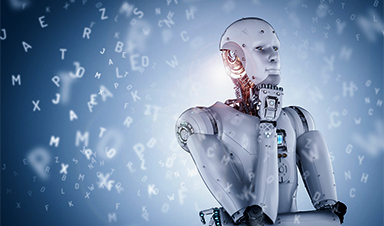Bank of America and Harvard University have collaborated on a new initiative designed to make the complex technologies behind artificial intelligence (AI) and machine learning (ML) more universally beneficial and accessible to the global workforce. The mission of the newly formed Council on the Responsible Use of Artificial Intelligence is to address issues of policy and ethics, thereby enabling industries and the individuals who drive them to keep pace with the rapidly evolving interface between people and machines.
Through the development of best practices and by maintaining a transparent dialogue, the Council strives to leverage the speed and convenience that AI and ML can provide industries such as finance, healthcare, retail, manufacturing and others. Bank of America’s chief operations and technology officer, Cathy Bessant, is a founding member of the council, which was formed in April 2018.
“I started thinking about the implications of the potential uses for artificial intelligence about 18 months ago,” she explained. “A huge piece of this is my own workforce here at Bank of America. In the face of ever-increasing technological change, how do we keep a workforce engaged and motivated? How are we thinking proactively about career development and career transformation? Can somebody who processes [data] manually today learn artificial intelligence, or learn how to manage a team of bots or machines that create outcomes in place of people?”
Therein lies the rub with artificial intelligence in a world that may not be quite ready for its benefits and, as some would say, possible pitfalls. While AI possesses vast potential for simplifying our lives, Bessant’s concerns are validated by the fact that many people view it as a threat to their livelihoods, creating skepticism and, in extreme cases, fear.
To help change the current ideology, the Council was formed to research the latest developments in this emerging technology and to educate the populace on its legal and moral implications, as well as to develop better, more useful and responsible ways to utilize a gift that is still widely misunderstood.
Image Credit: From the article on pymnts.com
News This Week
Nano-Enhanced Hydrogel Strategies for Cartilage Repair
A recent article in Engineering describes the development of a protein-based nanocomposite hydrogel designed to deliver two therapeutic agents—dexamethasone (Dex) and kartogenin (KGN)—to support cartilage repair. The hydrogel is engineered to modulate immune responses and promote [...]
New Cancer Drug Blocks Tumors Without Debilitating Side Effects
A new drug targets RAS-PI3Kα pathways without harmful side effects. It was developed using high-performance computing and AI. A new cancer drug candidate, developed through a collaboration between Lawrence Livermore National Laboratory (LLNL), BridgeBio Oncology [...]
Scientists Are Pretty Close to Replicating the First Thing That Ever Lived
For 400 million years, a leading hypothesis claims, Earth was an “RNA World,” meaning that life must’ve first replicated from RNA before the arrival of proteins and DNA. Unfortunately, scientists have failed to find [...]
Why ‘Peniaphobia’ Is Exploding Among Young People (And Why We Should Be Concerned)
An insidious illness is taking hold among a growing proportion of young people. Little known to the general public, peniaphobia—the fear of becoming poor—is gaining ground among teens and young adults. Discover the causes [...]
Team finds flawed data in recent study relevant to coronavirus antiviral development
The COVID pandemic illustrated how urgently we need antiviral medications capable of treating coronavirus infections. To aid this effort, researchers quickly homed in on part of SARS-CoV-2's molecular structure known as the NiRAN domain—an [...]
Drug-Coated Neural Implants Reduce Immune Rejection
Summary: A new study shows that coating neural prosthetic implants with the anti-inflammatory drug dexamethasone helps reduce the body’s immune response and scar tissue formation. This strategy enhances the long-term performance and stability of electrodes [...]
Scientists discover cancer-fighting bacteria that ‘soak up’ forever chemicals in the body
A family of healthy bacteria may help 'soak up' toxic forever chemicals in the body, warding off their cancerous effects. Forever chemicals, also known as PFAS (per- and polyfluoroalkyl substances), are toxic chemicals that [...]
Johns Hopkins Researchers Uncover a New Way To Kill Cancer Cells
A new study reveals that blocking ribosomal RNA production rewires cancer cell behavior and could help treat genetically unstable tumors. Researchers at the Johns Hopkins Kimmel Cancer Center and the Department of Radiation Oncology and Molecular [...]














Leave A Comment